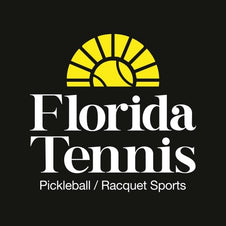Photobiomodulation: Shedding Red Light on Tennis Recovery
Apr 02, 2025
Tennis is a physically demanding sport that puts great demand on the body’s muscles, joints and energy supply. Recovery is a critical element at all skill levels and just as significant training itself. One emerging technology that is revolutionizing the way tennis players recover is photobiomodulation (PBM).
Photobiomodulation, also known as low-level laser therapy (LLLT) or red light therapy, is a non- invasive treatment that utilizes specific wavelengths of light to stimulate cellular function. PBM enhances mitochondrial activity, which increases ATP production, reduces oxidative stress, and improves cellular repair. This process promotes faster recovery from muscle fatigue, inflammation and injuries, making it a valuable tool for athletes.
Tennis players can integrate PBM into their recovery routines in multiple ways:
- Targeted Therapy: Applying PBM devices directly to sore muscles, joints, or injury- prone areas after matches or training sessions.
- Whole-Body Light Therapy: Using full-body PBM panels to promote systemic recovery and energy optimization.
- Pre-Match Preparation: Utilizing PBM before matches to enhance circulation, flexibility, and reduce the risk of injuries.
At Boca Cryo in Boca Raton, the wellness center uses a deep-penetrating red light device which stimulates the mitochondria of the cell, resulting in decreased pain, increased circulation and most importantly, a significant increase in cell function. A cell that functions better, creates more energy, which is vital for optimal tennis performance.
Coupling red light (Photobiomodulation) with PEMF (Pulsed Electromagnetic Field), or other devices we use, can further lead the cell to a faster and more efficient recovery.

Photo credit: Наталья Маркина / Pexels
So what are some of the benefits of red light therapy?
Faster Muscle Recovery. Prolonged rallies combined with the rapid deceleration and acceleration of pn-court movements, can lead to muscle fatigue and injury. PBM can helps accelerate muscle recovery by reducing inflammation and promoting tissue repair, allowing players to train harder and recover quicker.
Reduced Inflammation and Pain. Some tennis related injuries, such as muscle strains and tendonitis, can sideline a. player for prolonged periods of time. PBM’s anti-inflammatory effects can significantly reduce pain and swelling, expediting the healing process and allowing for a quicker return to the court.
Enhanced Performance and Endurance. ATP (adenosine triphosphate) is the primary energy source in all our cells. PBM can improve muscle endurance and energy levels, by increasing ATP production. The positive outcome could mean that players experience less fatigue during long matches and maintain peak performance for extended periods.
Injury Prevention. Regular use of PBM can also improve muscle elasticity and joint health. When muscle is more pliable, the risk of injuries decreases. Common tennis injuries such as rotator cuff tears, elbow and knee pain are reduced dramatically with the use of red and near infra-red light therapy.
Improved Sleep and Recovery. Deep REM (rapid-eye movement) sleep is essential for recovery and optimal performance. PBM has been shown to regulate melatonin production and improve sleep patterns, ensuring that tennis players wake up feeling rejuvenated and ready to compete.
Photobiomodulation is a game-changer in sports recovery, offering tennis players a cutting-edge approach to muscle repair, inflammation reduction, and performance enhancement. As technology advances, PBM is becoming more accessible, allowing athletes of all levels to benefit from its healing properties. Whether you're aiming to recover faster, prevent injuries, or gain a competitive edge, PBM could be the missing piece in your tennis recovery strategy.
===
Written by Ian Pyka. Photo credit (top): Наталья Маркина / Pexels.

